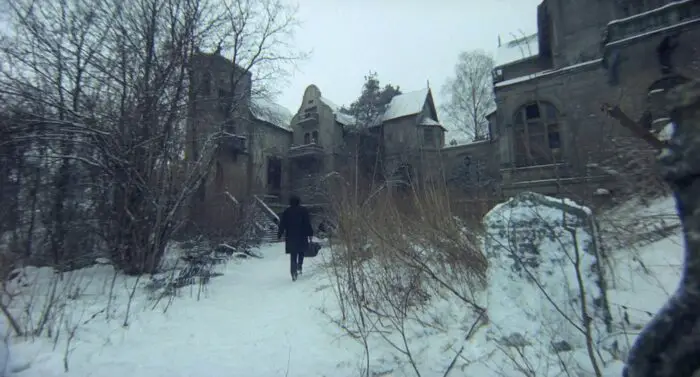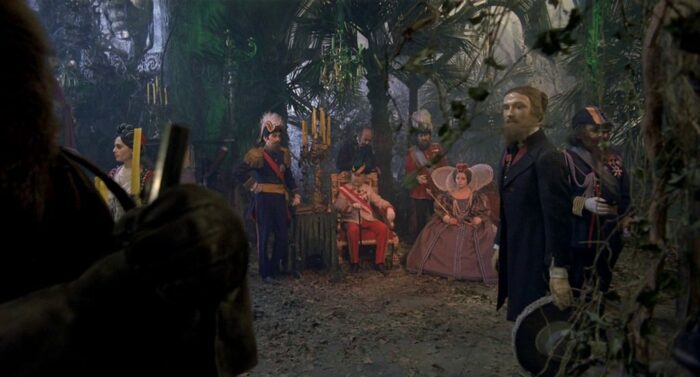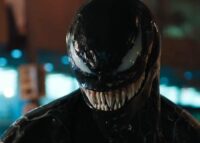The man behind The Hourglass Sanatorium, Polish director Wojciech Jerzy Has was born in 1925 in Krakow. Alongside Andrzej Wajda and Jerzy Kawalerowicz, he was one of the leaders of Polish Film School movement. This group of young authors woke up Polish cinema from its Stalinism era slumber. During the first post-World War II decade most of the movies screened in Poland were dull Soviet and locally made war films serving as propaganda mouthpieces. No one really liked them, even film critics were allowed to criticize them sometimes. Only after the death of Stalin was it possible to seriously examine the legacy of World War II. Especially the experiences of young people came under scrutiny.
If we exclude some documentaries, the debut of Has was Pętla (The Noose, 1958)—the heartbreaking story of hardened booze addict. The other notable works from this period were Pożegnania (Lydia Ate the Apple, literally Farewells, 1958) and Jak być kochaną (How to be Loved, 1963). Both are complicated love stories of complicated people, complicated even more by the raging war. Later Has turned to the adaptations of literary classics. His probably most acclaimed film was Rękopis znaleziony w Saragossie (The Saragossa Manuscript, 1964). It was based on the labyrinthine XVIIIth century novel by Jan Potocki. Has also adapted pre-naturalistic Polish novel Lalka (The Doll, 1968). Sanatorium pod Klepsydrą (The Hourglass Sanatorium, 1971) was his last cinematic triumph, though not because he ran out of inspiration…
He is dead…yet he lives
A lonesome crow darts through the sky shrieking ominously. A train powers through the winter landscape. The Jewish passengers seem gloomy and dusty. They look like they are about to leave the artistic allegory of XIXth century Polish political misfortunes, Jacek Malczewski’s Melancholia for the video to the The Cure’s “Lullaby“. The blind ticket inspector wakes up young man and tells him it’s time to leave. He asks him for the further directions but the blind man assures him he will find the place he seeks without any assistance.
Paired with spooky, harsh sound design, it already paints a foreboding picture. The feeling of dread arises with the main character named Józef making his way through the Jewish cemetery to the Hourglass Sanatorium. What does the symbol of time passage has to do with the place of healing? Why does the sexually assertive nurse tell Joseph that the patients are mostly sleeping there, even by day? The interiors of this peculiar hospital look abandoned, which makes one think of The Overlook Hotel in The Shining. After a while, the head doctor Gotard arrives. He explains to his guest that his father Jakub is there and he tries to make him live longer by certain time manipulations. He suggests that thanks to those techniques the old man can be cured from his terminal illness.

The word that ceased to be
It appears that the Hourglass Sanatorium is a time portal that enables Józef to relive many events from his past. We get to know his mother who still sees her son as a little boy. We see his father’s shop with apprentices singing non-canonical religious songs and lusting for feisty servant Adela. Jakub is a very eccentric figure, a street prophet and ornithologist with international connections. Józef clearly idolizes father but they don’t share the worldview. The old man sees the world as fleeting and everchanging, while the younger one looks for the rules set in stone. That’s why Jakub dismisses the alleged holy book Józef found in Adela’s flat as trash.
Has based this film on two short stories—Sanatorium pod Klepsydrą and Wiosna (The Spring). Their author, Bruno Schulz, was a Jewish drawing teacher in the town Drohobycz near Lwów (now Lviv in Ukraine). He met a tragic fate during World War II, being shot to death on the street of local ghetto one day before planned escape. With pedigree like that, there’s no wonder The Hourglass Sanatorium can feel like a documentary on Jewish culture with its religious ceremonies and Sabbath feasts.
It can be also interpreted as a testimony to the brutal end of this culture. Schulz wrote his stories with the horrors of World War I in mind but it’s hard not to think about Holocaust while watching the movie. Sadly, after the Soviet support to Egypt in the Six Day War the sympathetic portrayals of Jews became unwelcomed in Poland for a long time. After he came back from Cannes Festival in 1973, Has was banned from directing for eight years. He cited the constant risk of blowing up the budget of his projects as a reason, but politics were likely a factor, too.
What’s the matter with the matter?
There is another plane of existence in the The Hourglass Sanatorium. Its most prominent citizens are young boy Rudolf and ethereal yet seductive princess Bianka. They are probably projections of his childhood memories. Józef is obsessed with uncovering the real idenitity of mysterious Bianka. He eventually succeeds but they can’t agree on anything and Józef leaves her to annoying brat Rudolf.
Bianka’s father runs a panopticum with the mannequins of the famous people from the past. The scenes with mannequins are the mirror of Schulz’s views on matter. The Polish writer believed that everything in the world is alive and can be freely formed by anyone. On the other hand, human creations are flawed and they are meant to suffer, stuck forever in one pose. It sounds outrageous but at this point of the movie we already accept that nothing is as it seems. We lose track of Józef’s age, Bianka declares she was a boy once, and there is also a man with female breasts (or at least it seems so) in one of the final scenes. Rudolf and Józef repeatedly accuse one another of lying. Of course, we also don’t know where exactly the Hourglass Sanatorium is but we suspect more and more it can be a gateway to the underworld.

Richness in decay
All those features make The Hourglass Sanatorium a must see for the fans of surrealist cinema. It’s worth watching even if you never heard of Schulz and have no further interest in Polish culture. Witold Sobociński’s cinematography perfectly captures the sense of inevitable destruction Has was striving for. Production design by Andrzej Płocki and Jerzy Skarżyński skillfully mixes the reality of shtetl (small town in southern Poland dominated by Jews) with the fairytale elements. Gray reality of the province called Galicia in XIXth century contrasts with outlandish costumes by Lidia and Jerzy Skarżyński. Especially the foreign ornithologies look like extras from an Empire of the Sun video.
Jan Nowicki shows a lot of range as Józef. It’s kinda funny that Nowicki plays a stiff, awkward youngster given his reputation as a leading macho of Polish ’80s cinema. Even with his limited screentime one of Polish all time greats Gustaw Holoubek gives rightly sinister vibes as Dr Gotard. All the actors playing mannequins coming to life in unexpected moments also deserve a shoutout. Comparisons with such works like Valerie and Her Week of Wonders and Werckmeister’s Harmonies come to mind but Has created cinematic language of his own. It’s a pity he, like many other noncoformists in history, was silenced in his prime.



